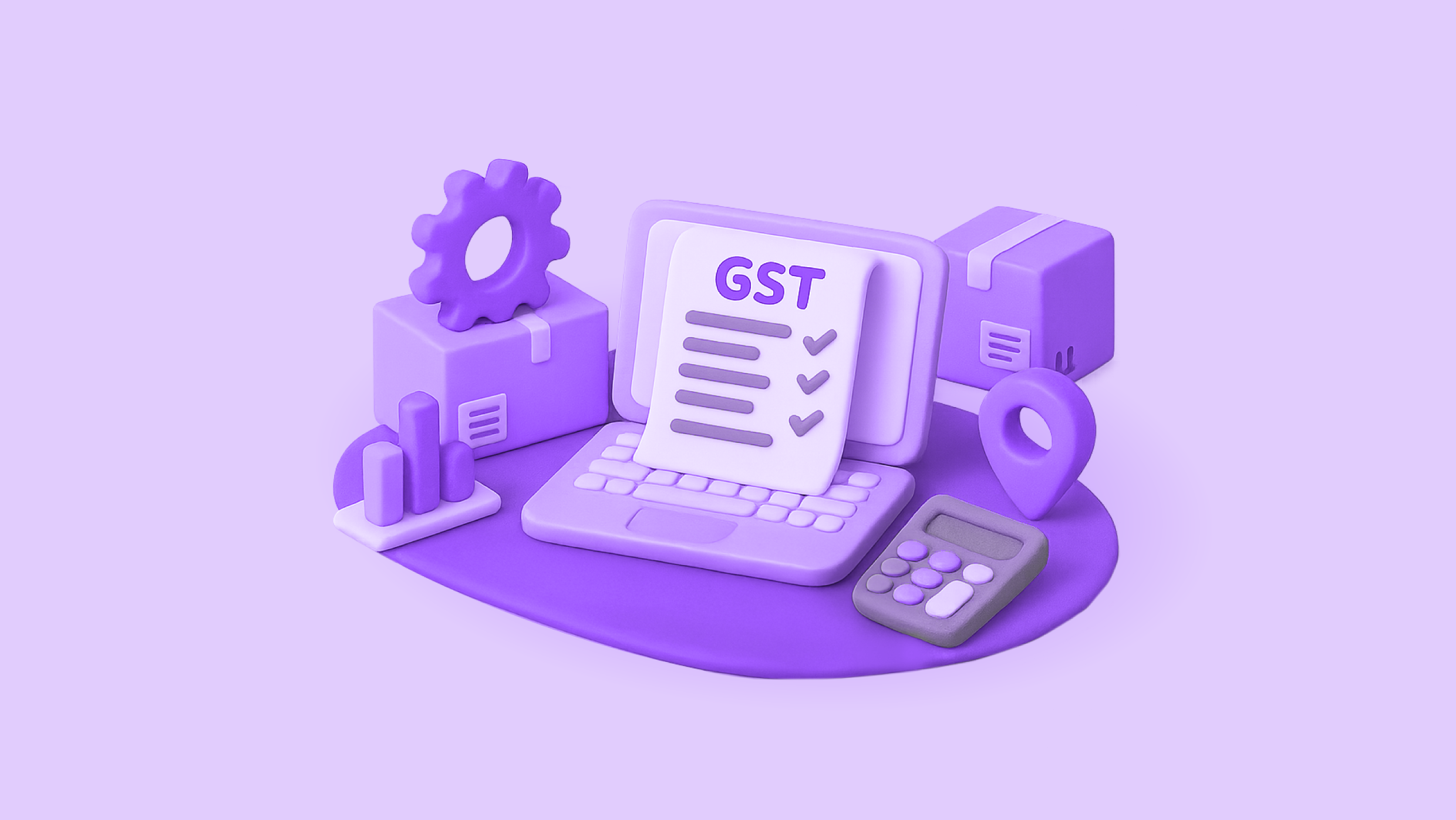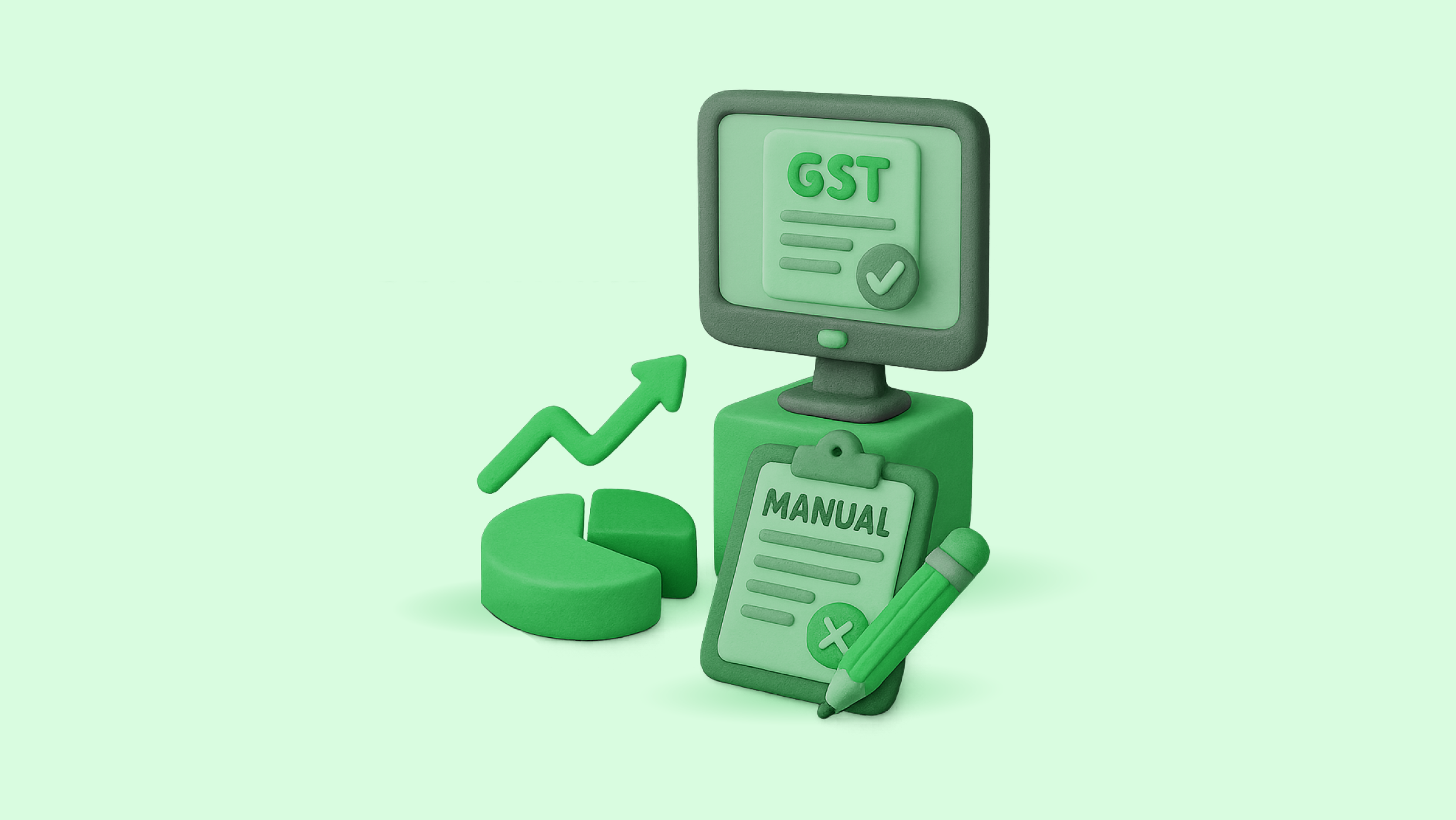India’s Goods and Services Tax (GST) framework is evolving rapidly. What began as a digitised tax regime in 2017 is now shifting into a real-time, API-driven, AI-assisted compliance system. Businesses, finance teams, and tax professionals no longer have the luxury of post-facto corrections; compliance is being built into the transaction flow itself.
In this blog, we’ll explore the future of GST in India, how AI is reshaping compliance, why APIs are becoming indispensable, and what your team should focus on today.
GST Compliance in 2025: Where We Stand
Several key reforms have already reshaped GST filing in 2025:
- Invoice Management System (IMS): From 2024, recipients can accept, reject, or keep invoices pending on the GST portal, directly impacting ITC availability.
- 30-Day E-Invoice Deadline: From April 1, 2025, businesses with turnover above ₹10 crore must upload e-invoices within 30 days, or the IRP will reject them.
- GSTR-3B Hard Lock: Starting July 2025, output tax liability fields in GSTR-3B will be auto-filled and locked from GSTR-1. Any corrections must be made via GSTR-1A.
- B2C E-Invoicing Pilot: Voluntary testing in certain sectors will push GST further toward full digital trails across all transactions.
What this means: Compliance will no longer wait for month-end filings. Errors caught late will block ITC, delay refunds, and disrupt cash flows.
How AI is Changing GST Compliance
Artificial Intelligence is already embedded in GST systems through projects like BIFA (Business Intelligence & Fraud Analytics) and ADVAIT. But businesses themselves can also leverage AI in day-to-day compliance:
- Supplier Risk Scoring
AI models flag vendors with poor filing history or suspicious networks,helping businesses reduce exposure to fake invoicing.
- Anomaly Detection
Algorithms compare e-invoice, e-way bill, and return data to highlight quantity/HSN mismatches or delayed reporting.
- IMS Decision Support
AI can prioritise high-value invoices for acceptance and auto-flag risky ones for manual review.
- Notice Intelligence
Models can read GST notices, classify them by issue (ITC mismatch, late filing, audit), extract deadlines, and suggest draft responses.
Result: Teams spend less time firefighting and more time on proactive risk management.
Benefits of API-Based GST Filing
API integration with GSTN has moved from being “good to have” to a compliance necessity.
- Faster Filing: Push data directly from ERP to GSTN, IRP, and e-way bill systems.
- Error Prevention: Automated checks validate GSTIN, HSN, place of supply, and invoice details before filing.
- Ledger Sync: Businesses can pull live data from cash/credit/ITC ledgers and GSTR-2B for instant reconciliations.
- Audit Readiness: Every API transaction leaves a digital trail, simplifying audits and internal reviews.
- Seamless Flow: IRP-validated invoices auto-populate e-way bills and GSTR-1, reducing duplication.
For enterprises handling multi-GSTIN operations, API-based filing ensures consistency and saves hundreds of man-hours monthly.
Preparing for 2026: A Compliance Playbook
Now that e-invoicing, IMS, and GSTR-3B hard-locks are live, what comes next? Businesses should prepare for:
- Expansion of the 30-Day IRP Rule: Today, it applies to ₹10 crore+ taxpayers; the threshold may be extended downward in the future, similar to how e-invoicing scaled from ₹500 crore to ₹5 crore.
- B2C E-Invoicing Pilots: Ongoing pilots indicate that large sectors (retail, telecom, e-commerce) may be brought under B2C invoicing, ensuring full supply-chain visibility.
- AI-Driven Risk-Based Scrutiny: Expect more automated notices, instant alerts, and data-driven investigations based on deviations from typical patterns.
- Sector-Specific APIs: GSTN and GSPs may roll out sector-oriented API bundles (e.g., logistics, pharma) for tighter integration with business workflows.
What It Means for Businesses, CAs, and Finance Teams
- Businesses: Need to align compliance with working capital; delayed ITC claims can impact cash flows.
- CAs: Can productise compliance services, offering API-based filing, reconciliation, and notice defence.
- Finance Teams: Should treat GST as a real-time process, not an afterthought, embedding controls into daily operations.
The Role of Platforms like Optotax
As compliance becomes API-first and AI-driven, teams need integrated solutions that manage reconciliation, notice handling, challans, and filing, all while staying audit-ready. Platforms like Optotax by OPEN are designed with these capabilities, enabling businesses and tax professionals to navigate the future of GST with confidence.
Conclusion: A Future Built on AI, APIs & Automation
The future of GST in India is clear: tighter controls, real-time data, and automation-led compliance. AI will drive anomaly detection and risk prevention, while APIs will make GST filing faster, safer, and more reliable.
For businesses, CAs, and finance teams, success will depend on adopting tools and workflows that are IMS-ready, API-connected, and AI-assisted. Those who adapt early will not only stay compliant but also protect cash flows and reduce the risk of penalties and disputes.





